Review: Clay to Win
Publisher: Coleco Industries
Year: 1988
Tagline: The Only Game You’ll Ever Knead!
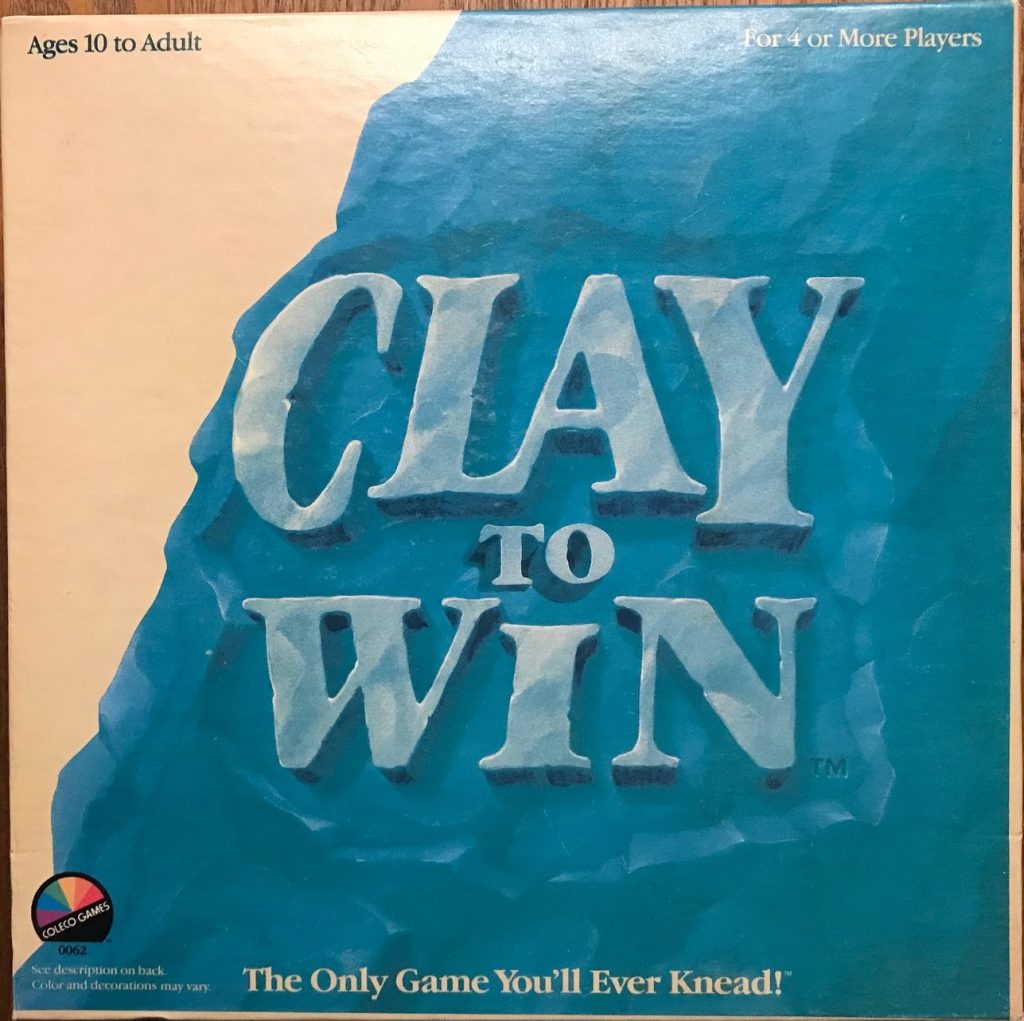
HOW WE MET
This is one that Bill brought home from a day out. So even though I was not the one to make the important decision to spend $2 on it, I certainly would have. The cover is weird and dated, and the tagline has to be amongst my favorites.
It’s clear from the back of the box that this game is like Pictionary but with sculpting clay instead of drawing – something most of us have done if we have played Cranium. I wondered if there is enough fun there to carry the entire premise for a game, but I was hopeful because I enjoy that type of game. I only recently got rid of my childhood copy of Pictionary, and I still happily own Morphology. We used to play Win, Lose or Draw on the regular for game night.
HOW IT PLAYS
Important note: I have to claim some creative freedom here. My copy of Clay to Win is missing the instructions (as well as the mats and knives). I did some frantic googling for instructions as we sat down to play, but it was difficult. The best I could find within a few minutes was someone that sold it on eBay several weeks ago and included a photo of the first page of instructions. But not the second page.
Since I did not know what the winning condition was, we decided to just play to 10. With a four player game that went pretty evenly throughout, this ended up being a good game length and good call.
I have since learned that the object of Clay to Win is to play until one team’s clay is all gone; then the other team wins!
In Clay to Win players divide up into two different teams. One player rolls the die, which corresponds to a specific theme such as Anything Goes, People & Places, Sayings, Actions, Things or Choice. That player acts as the sculptor for their team and draws a card, then reads to themselves the item corresponding to the number that was rolled. They then pass the card to the sculptor on the opposite team. Once both sculptors know what they are trying to sculpt then they begin!
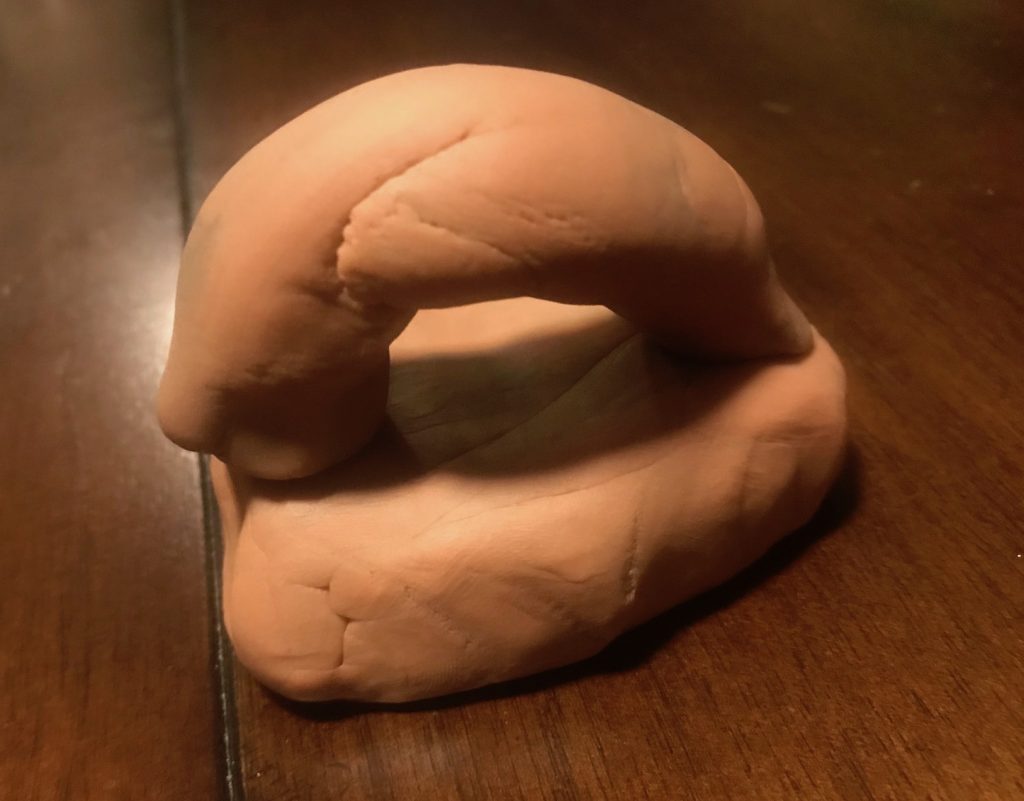
The first team to guess the correct thing (or saying or action etc) being sculpted gets one point. That team also gets to take the Clay to Win mold and take a piece of their opposing team’s clay. So the more you lose, the less clay you have.
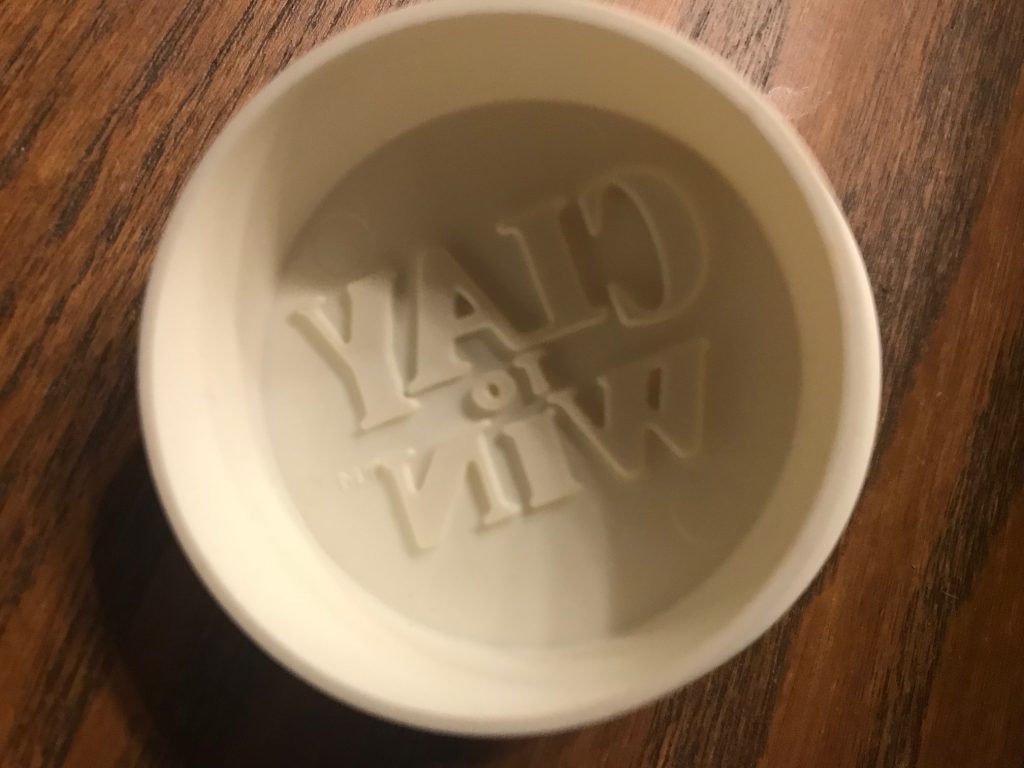
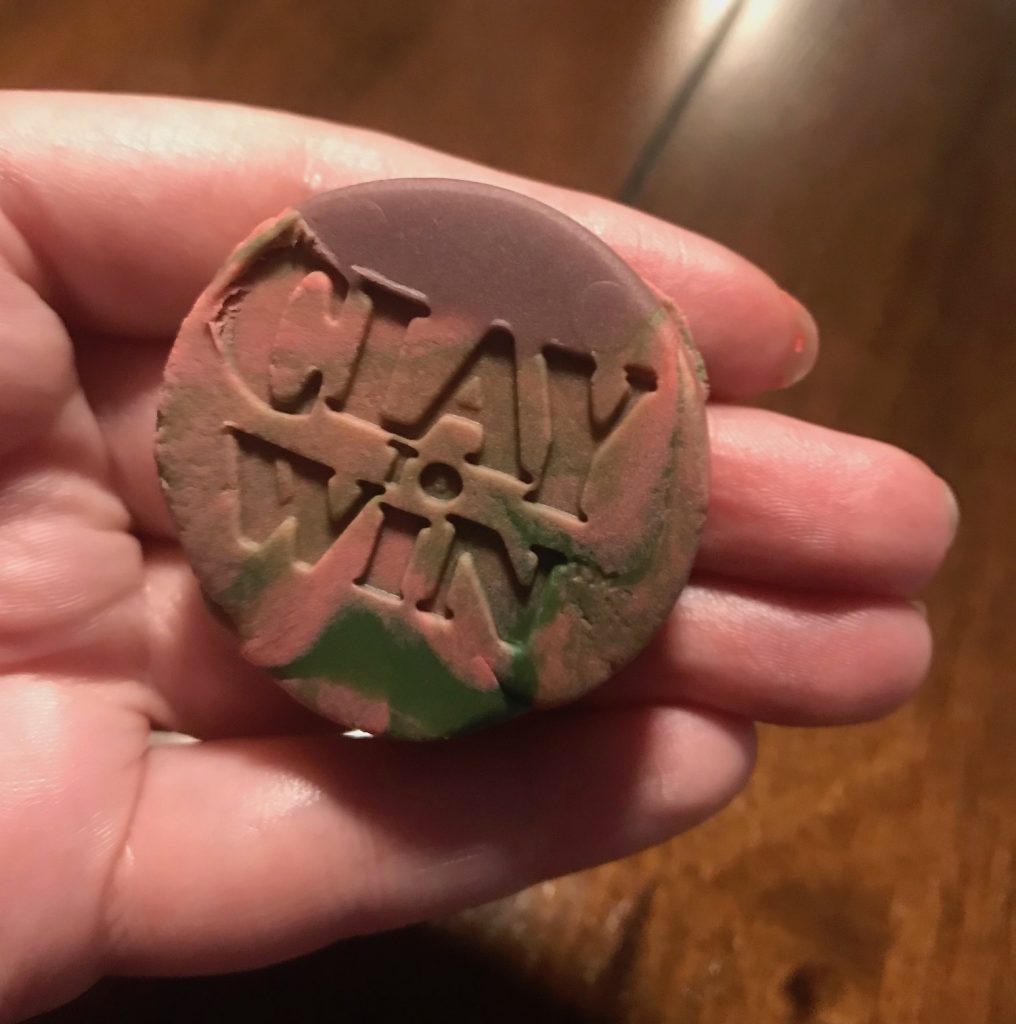
Play continues in this way, with teams taking turns rolling the die but sculpting simultaneously, until one team reaches 10 points (in our case). That team wins!
HOW IT WENT
Since we were missing sculpting knives, Keri fetched us fondue utensils.
The clay was included in this used version, but it was old and hard and dry. John and Keri picked up Play-Doh for us to use instead. It was a mix-pack of several colors in small containers, so we each chose two colors for our clay to start. We eventually joined all of our clay into a single one for our team, but it was fun to start with two colors and start to mix them then combine with another two colors and start to mix those together for a team color. We knew we would always end up with a brown of some kind but it was fun to watch the progress.
I wish I had taken more photos of our play because we had some interesting sculpts. It’s all about how the sculptor interprets breaking down the thing, and how the guesser interprets the sculpt. But guessers can see both team sculpts which can bring them a long way towards the right guess.
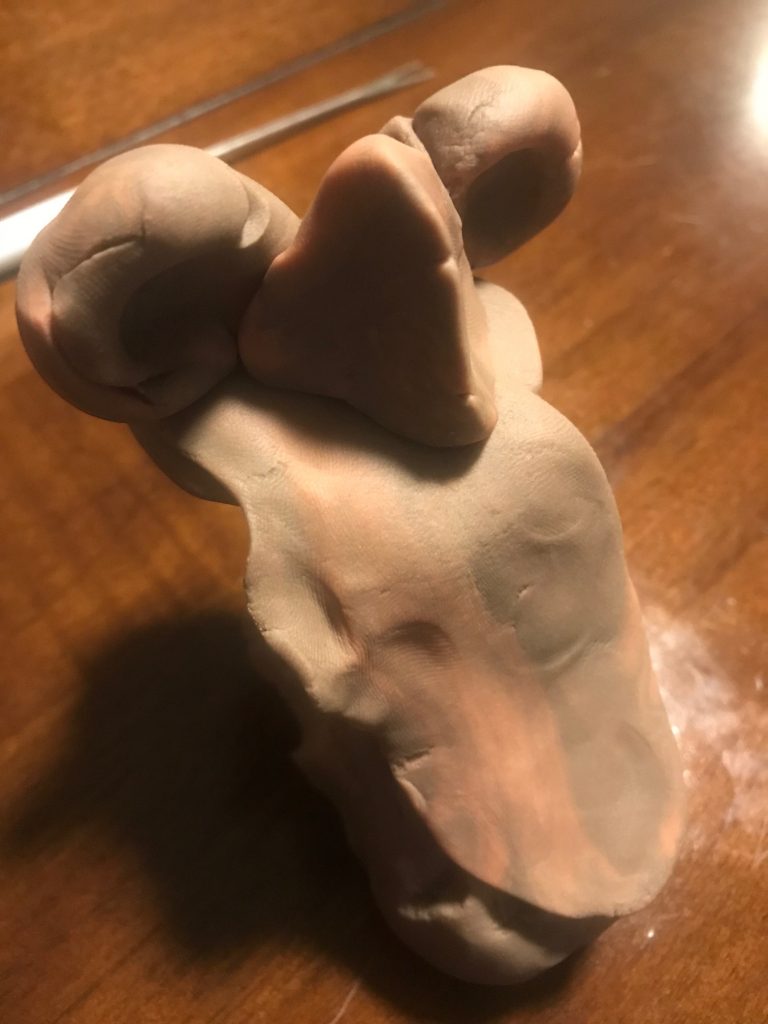
The game was challenging, but it was not as impossible as I had assumed it would be. Here are a few of the examples I remember from our play:
- GRAVEYARD SHIFT: Both John and I created graveyards so that part was done. I created a clock to try and indicate the shift, and we both made little dudes that did an actual job and got paid by someone else for it. Finally John made a gear shift and Keri was able to guess correctly.
- IRAN: This one probably included the most frustration and the most laughter. Bill sculpted a nice little world and I was able to determine that he wanted me to say a country in maybe eastern Europe? He pointed at it 500 times but I was not sure which region it really was. He probably did a great job, but geography is as dumb as I get. Meanwhile Keri sculpted a little man and started to make him move. This all went on for a couple of minutes until a light bulb went off and I guessed Iran. This is a good example of one I would not have been able to guess without both sculpts as clues.
- JOHNNY CASH: I started by sculpting money and then drew a dude with a guitar. John had a dude too, but he also made a ring of fire. Touché. Keri guessed it.
Our teams were pretty evenly matched and a lot of the time we were trading points. Eventually Bill and I established a lead of a few points and maintained that until we won.
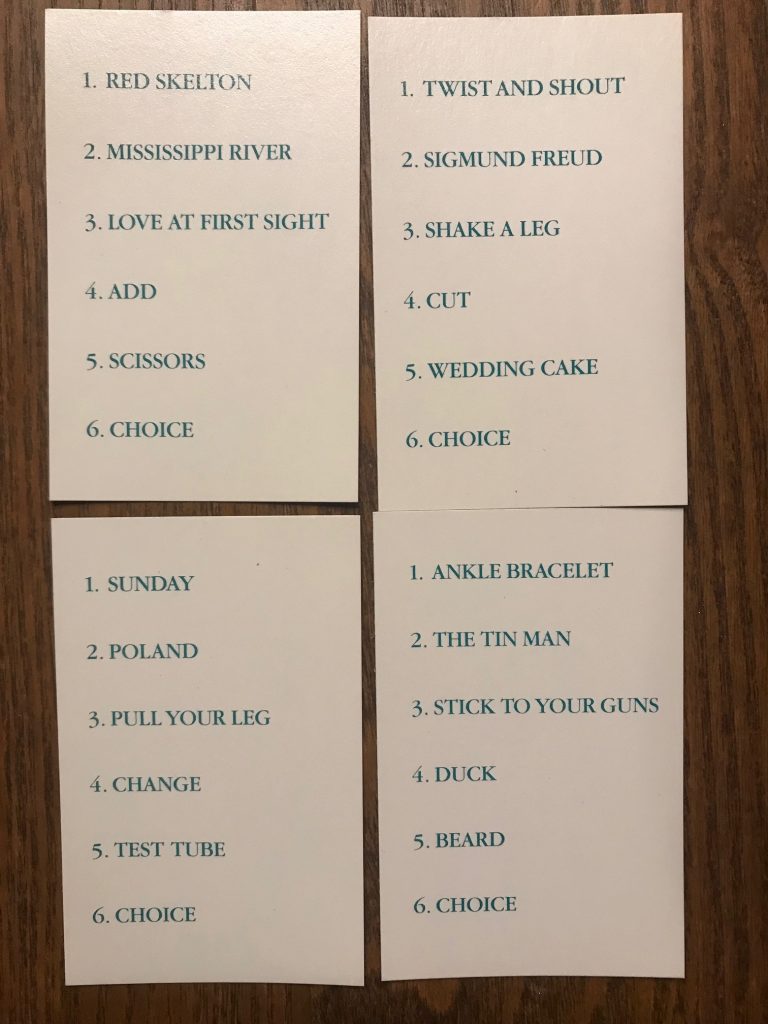
Clay to Win was thoroughly enjoyable. I think one of the things the game has going for it is that I enjoyed guessing a sculpt and I enjoyed sculpting a sculpt. So each and every turn I was excited for what is happening next. And even though the stealing clay after scoring a point did not really affect much of anything, it was fun and we did it.
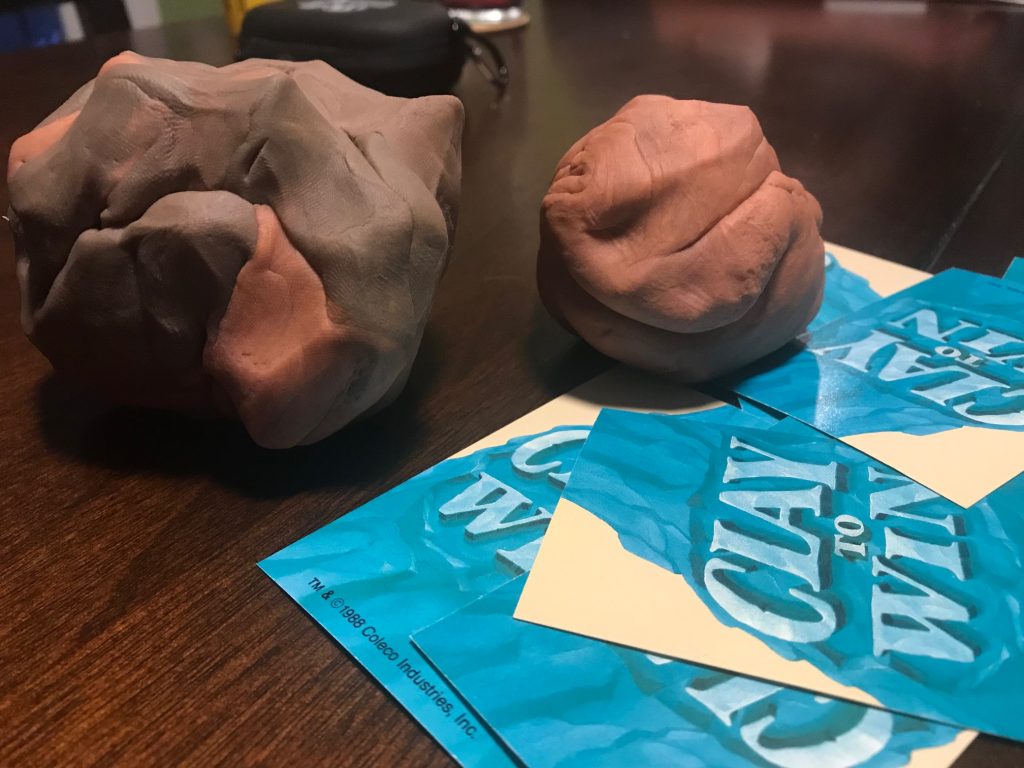
It may be worth noting that we played without mats using Play-Doh on a wood table. The table was pretty disgusting after the game, but it cleaned up very easily with a quick spray down and wipe up.
PLAY OR PASS
Play. I like this type of game, so I say play. Clay to Win is challenging by asking you to sculpt things that are sometimes un-sculptable, but if you break the thing down it is often very possible. Similar to Win, Lose or Draw or some other variant, there is a lot of laughter, frustration, confusion, pointing, nodding, encouraging, shaking of heads and going back to the drawing board. And I definitely enjoyed the punitive nature of stealing the other team’s clay.
The game is not magic; if you do not enjoy this type of drawing or sculpting and guessing game then this will not change your mind. But we had a ball. A big, multi-colored brownish one.